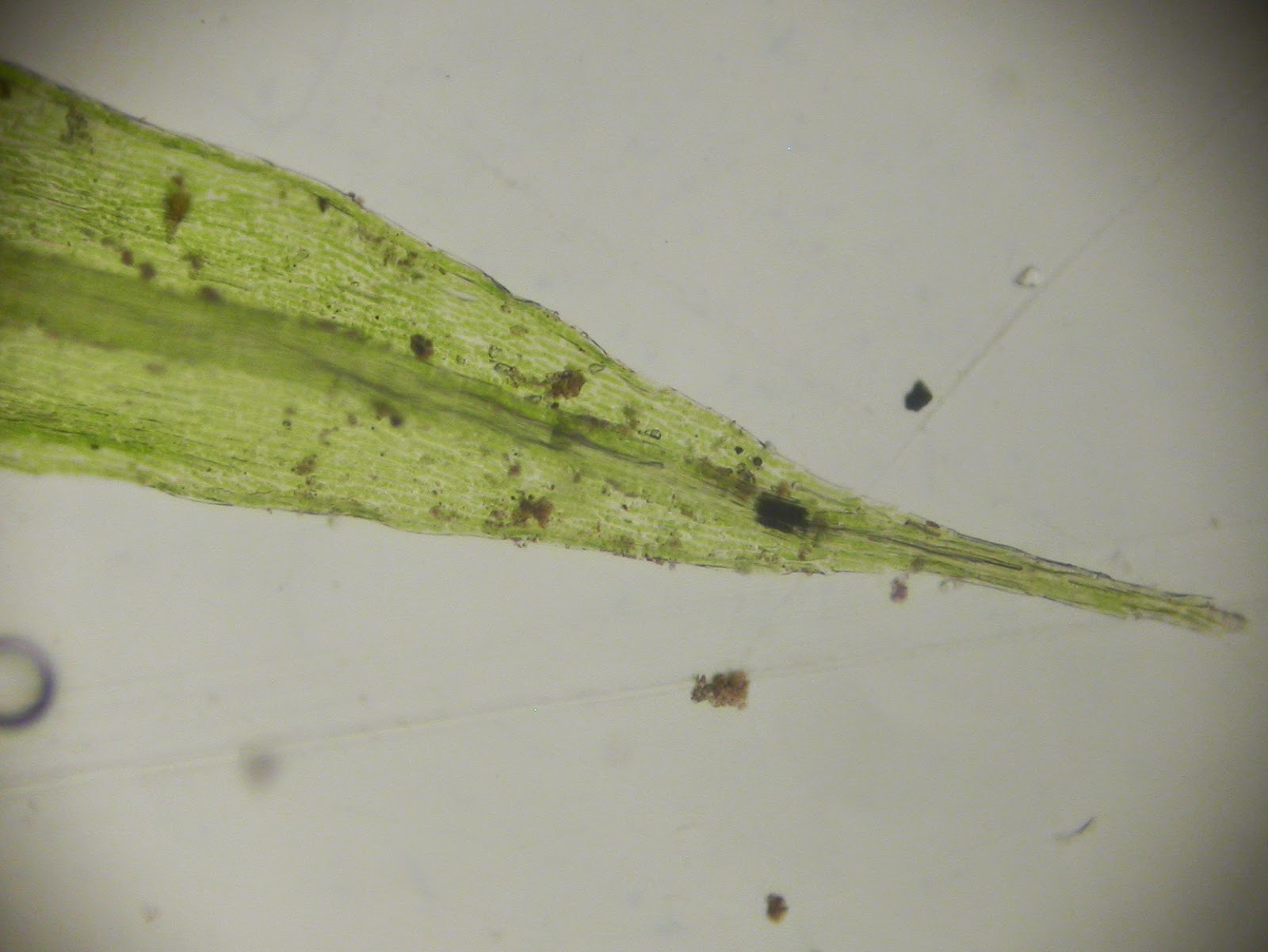Looking at the tetrad list yesterday morning it was obvious it hadn't been 'grotted', with only two Didymodon species on the list and no Syntrichia. Surprsingly there were only two Orthotrichum species recorded too. This seemed a good excuse to take the kids to the playground in Pentyrch yesterday, which proved a bit more interesting than expected as there were some small limestone outcrops just outside the fence.
The visit added 10 species to the tetrad list taking it past the 150 mark; four of these were on a Sweet Chestnut (Orthotrichum lyellii, Hyp. cup. var resupinatum, Syntrichia papillosa and S. laevipila), one on concrete steps (Didymodon luridus) and four on the limestone outctrops (Orthotrichum anomalum, Barbula sardoa, Didymodon sinuosus and Bryum radiculosum). I'd be grateful if someone is able to confirm the Bryum from the photos below; I suspect I've been overlooking it until now. Thanks
 |
| The only rhizoidal gemma I could find. It looked right under the microscope. |
 |
| The straight leaves and excurrent nerve look right for radiculosum. |


Good work! I wish there was some way of highlighting well-recorded tetrads that lack (eg) grots or epiphytes. When bashing Pembs I had a sheet of 6 common but ecologically disparate species that indicated those gaps (Cryphaea, T muralis, Diplophyllum, Kindbergia, Bryum argenteum and something else).
ReplyDeleteThe Bryum is probably right, but the rhizoids look purple so it might be B ruderale.
Very well spotted re the purple rhizoids - I've checked these more carefully tonight and they are distinctly purple (and papillose), so I guess it must be ruderale (rather than violaceum). It was probably on compacted soil (by a footpath) next to the limestone rather than growing directly on the rock.
ReplyDelete